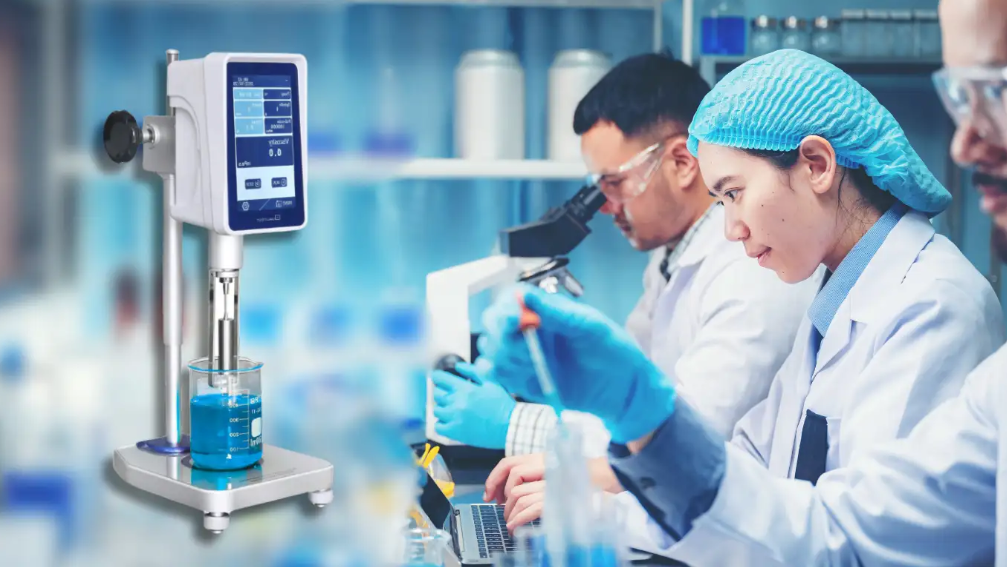Maintaining consistent product quality is a challenge in the paint and coating industry. Viscosity, a critical property of fluids, directly impacts how coatings are applied, their drying times, and their final finish. Inconsistent viscosity can lead to costly production issues and subpar results.
This is where viscometers come in, offering precision and reliability in monitoring and controlling this vital parameter.
Understanding Viscosity in Coatings
Viscosity determines how a paint or coating flows and spreads, directly impacting its application and performance. High-viscosity coatings may be challenging to apply uniformly, leading to defects such as brush marks or sagging.
Conversely, low-viscosity coatings might run or drip, causing uneven coverage. Factors influencing viscosity include temperature, shear rate, and formulation composition.
Therefore, monitoring and controlling viscosity ensures that coatings meet desired specifications and perform optimally under various application conditions.
Types of Viscometers Used in the Coating Industry
Several types of viscometer is employed to measure the viscosity of paints and coatings, each suited to specific applications:
1. Rotational Viscometers
These instruments measure viscosity by rotating a spindle within the fluid and detecting the resistance encountered. They are versatile and can handle a wide range of viscosities, making them suitable for both Newtonian and non-Newtonian fluids. Rotational viscometers are commonly used for quality control in paint and coating formulations.
2. Cone and Plate Viscometers
A subtype of rotational viscometers, these devices consist of a cone that rotates against a flat plate with a thin layer of the sample in between. They are highly accurate and require only a small sample volume, making them ideal for high-shear measurements, such as simulating brush or spray applications.
3. Krebs Stormer Viscometers
Specifically designed for the paint industry, these viscometers measure viscosity in Krebs units (KU) and are often used to assess the consistency of paints, varnishes, and other coatings. They operate at a fixed speed, providing quick and reliable measurements suitable for quality control processes.
4. Flow Cup Viscometers
Also known as efflux cups, these simple devices measure the time it takes for a specific volume of liquid to flow through an orifice. They are useful for low-viscosity coatings and provide a quick assessment of flow characteristics, though they are less precise than rotational viscometers.
If you’re in need of a reliable viscometer, we highly recommend exploring Qualitest North America’s extensive range of viscometers. As a trusted supplier, Qualitest provides high-quality solutions designed to meet your specific requirements.
Importance of Viscosity Measurement in Quality Control
Accurate viscosity measurement is crucial for several reasons:
1. Application Consistency
Ensuring the correct viscosity allows for uniform application, whether by brush, roller, or spray. This uniformity is vital for achieving the desired finish and performance characteristics.
2. Product Stability
Monitoring viscosity helps in detecting changes in formulation stability, such as settling or separation, which can affect the shelf life and effectiveness of the product.
4. Regulatory Compliance
Many coatings must meet specific viscosity standards to comply with industry regulations and safety requirements. Accurate measurements ensure adherence to these standards.
4. Cost Efficiency
Maintaining optimal viscosity reduces material waste and improves application efficiency, leading to cost savings in both production and application processes.
Best Practices for Viscosity Measurement
To achieve accurate and reliable viscosity measurements, consider the following best practices:
1. Temperature Control
Viscosity is temperature-dependent; therefore, maintaining a consistent temperature during measurement is essential for accuracy. Utilizing viscometers with integrated temperature control can help achieve this consistency.
2. Sample Preparation
Ensure that samples are homogeneous and free from air bubbles or contaminants that could affect the measurement. Proper mixing and handling of samples are crucial steps in the preparation process.
3. Calibration and Maintenance
Regular calibration of viscometers against standard reference materials ensures ongoing accuracy. Additionally, routine maintenance, such as cleaning and inspection, prevents equipment-related errors.
4. Understanding Shear Rates
Different application methods subject coatings to varying shear rates. Selecting a viscometer that can measure viscosity at relevant shear rates is important for replicating real-world application conditions.
Closing Chapter: The Right Viscometer for Your Needs
Achieving consistent quality in the paint and coating industry hinges on precise viscosity measurement. Whether you’re optimizing formulations, ensuring product stability, or maintaining compliance with industry standards, a reliable viscometer is essential. The right instrument not only delivers accuracy but also enhances efficiency, saving time and resources.
If you’re searching for an extensive range of viscometers designed to meet the demands of modern quality control, consider Qualitest North America. With innovative solutions tailored to various industries, Qualitest ensures precision, reliability, and cost-effectiveness in every product. Visit www.worldoftest.com to explore the full range and find the perfect viscometer for your needs.






